Online GBV or not? [starter activity]
This activity is designed to spark debate and discussion, and give you, the trainer/facilitator an opportunity to clarify concepts relating to the experiences of women and gender diverse individuals on the internet and online gender-based violence (online GBV).
About this learning activity
This activity is designed to spark debate and discussion, and give you, the trainer/facilitator an opportunity to clarify concepts relating to the experiences of women and gender diverse individuals on the internet and online gender-based violence (online GBV). This is specifically aimed towards speaking about the less obvious forms of online GBV, and to discuss the participants' assumptions on how they define what GBV is.
The main methodology in this activity is to show examples of experiences of women and gender diverse individuals online (It would be good to have exagerrated examples to encourage debate or discussion) and memes, and have the participants react with online GBV or Not GBV upon reading/hearing/seeing the example meme. Then you can ask the participants to defend their initial position through a set of guide questions.
It is essential to frame this activity as a vacuum where ALL opinions and viewpoints are allowed (as long as they are expressed in a manner acceptable to the group, assuming Participant Guidelines are established earlier in the workshop), and that what the participants say during this activity will not be quoted/publicised/shared with others. It also a good idea, especially if the group has a lot of experienced feminists, to encourage others to play Devil's Advocate in order to enrich the discussion.
Facilitation Note: It would be ideal to have established and negotiated participant guidelines about respect before-hand, just in case the debate gets heated.
For the trainer/moderator, this activity can be used to learn more about the participants' level of understanding and appreciation of online GBV.
Learning objectives this activity responds to
- An understanding of the forms of online GBV and its impacts on the survivors and their communities.
- An understanding of the continuum of violence between the offline and the online spheres, and the power structures that allow it.
Who is this activity for?
Ideally, this activity is for participants who have an understanding of internet rights, sexual rights and WHRDs.
Time required
Depending on how many examples are shown, this activity can take from 30 minutes to 90 minutes.
Resources needed for this activity
- Signs (not bigger than half a 4A sheet of paper) with Online GBV printed on one side and Not Online GBV! printed on the other. One per participant.
- A way to present the examples of women's experiences on the internet. It could be a poster of the printed memes or a projector to show the memes.
(See Resources for sample memes)
Mechanics
Show a meme or example of an experience that women and gender diverse individuals have had online.
Tip: Perhaps start with a glaringly obvious example of online GBV, then move to more nuanced examples.
After each example, you ask: Is this Online GBV or Not Online GBV?
The participants then raise their boards to show which they chose.
Once everyone has made a choice, you can then ask: Why do you consider this Not Online GBV/Online GBV? Then get an opinion from someone who had the opposite opinion, and allow the group to ask each other questions.
If there is not much disagreement among the group, then dig deep into the example through these guide questions:
- Who is being attacked in this meme? How will it impact them?
- What are the values underpinning this meme? What is the meme creator (and anyone who shares and likes this meme) really saying about women, women-identified, and/or queer individuals, and their communities?
- Does this meme reflect the values in your communities? How so?
- If you had come across this meme, how would you have reacted? How do you think we should react to it?
You can end the discussion with a bit of synthesis, and then move on to the next example.
To synthesise each example, the trainer/facilitator can:
- Do a quick summary of the discussion that the participants had over the example.
- Name what the example is, or the various ways the example has been described.
- Point out the gender stereotyping, gender bias and/or misogyny that was reflected in the meme.
Intersectionality Note: It is also important to draw out how women and gender diverse individuals and communities would be impacted differently by the messages / memes.
You don´t have to do a synthesis for each example that you show. If a discussion on a specific example is similar to a previous one, then you can just point out the similarity.
Facilitation Note: It is important, while the activity is still happening, that you, as the trainer / facilitator, do not take a side in the discussion that the participants are having. Having a facilitator siding with a group of participants is an effective silencer of discussion and debate.
At the end of the entire exercise, you then do a bigger synthesis of the activity. In this synthesis, you can go back to the examples that got the most debate and discussion from the participants, summarise the discussion, and then share your own thoughts and opinions on the matter.
Key points to raise in the main synthesis:
- The relationship between "real world" values and the creation of such memes.
- The existing power structures, patriarchal values, gender bias and bigotry that are showcased in the examples.
- What constitutes gender-based violence.
- How positionality and privilege within the different women and gender diverse sectors have different effects on indviduals and communities.
Facilitator preparation notes
From the start, you need to decide if you are playing a trainer (one with the knowledge and experience to provide answers), or a facilitator (one who guides discussions, and keeps herself from sharing her own opinion) in this learning activity. Being both will not be conducive to a good discussion or a safe space for the participants. If you are being a facilitator, you wouldn't want to provide answers at the end of the discussion, and make participants defensive. If you are being a trainer, you wouldn't want to be so strict in your opinion on the matter that it silences the participants.
Another thing to prepare for is your own assumptions about what online GBV is. Take a refresher by reading Good Questions on Technology-related Violence.
Facilitation Note: This activity is not just to show examples of obvious cases of gender-based online violence, but to have a discussion with the participants about a nuanced understanding of what is online violence and what is not. So, in the examples, include examples of common experiences that women and gender diverse individuals have on the internet – and not just the ones that are glaringly violent.
There are sample Sample Memes found below, but it would be ideal to use examples that are context-specific to the participants in the workshop. It would be good to show a range of examples, including messages or memes:
- that are misogynistic, homophobic, transphobic
- that attack women and gender diverse individuals and communities for their actions
- that name or target specific women or gender diverse individual in the message / meme
- that are overtly-violent and / or calls for gender-based violence
- that represent women and queer bodies as sex objects
- that show offline actions against women put online
- that attack women and gender diverse individuals on the basis of their social class
The point here is to not be too obvious in your sample choices but to generate a discussion among the participants.
If you have time to prepare with the participants, ask them for examples of online harassment that they have witnessed (not necessarily targeted towards them) online, and show those examples in the activity.

Additional resources
Sample Memes
Warning : This page contains racist, sexist, homophobic transphobic and rape apology material.
Facilitators Note: There are sample Sample Memes found below, but it would be ideal to use examples that are context-specific to the participants in the workshop. We encourage you as trainers to find your own memes so that they are relevant to the participants.
Intersectionality Note: In choosing sample memes, make sure that you include different race, class, religious backgrounds, sexual orientation and gender identities.
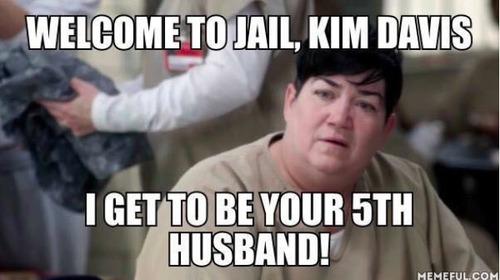
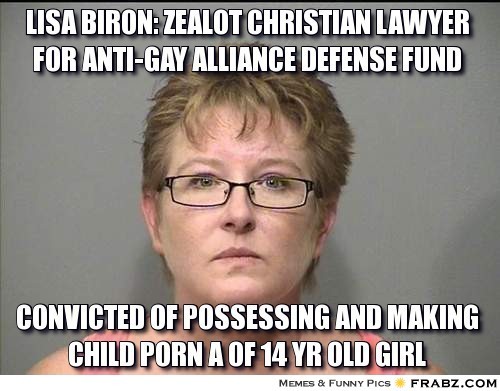
When a woman complains about the lack of women´s representation in video games, a sampling of the reactions she gets:




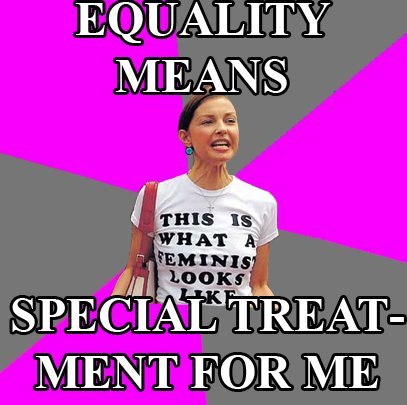
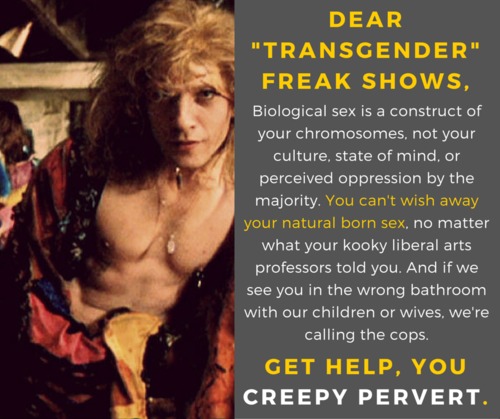


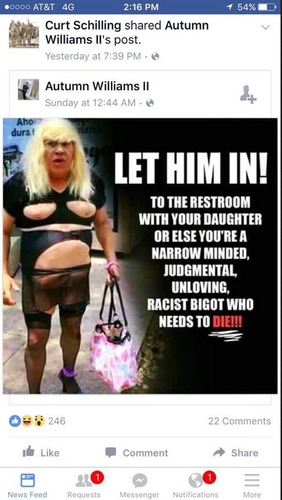



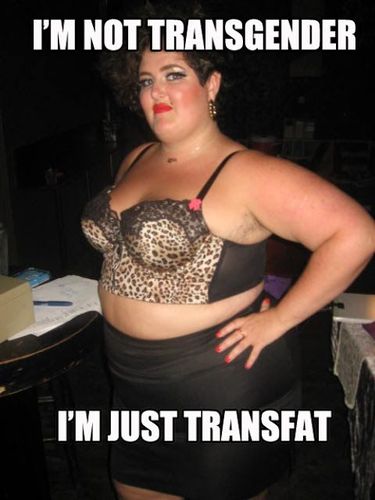


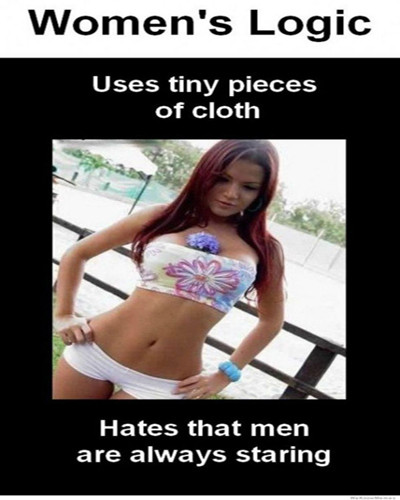

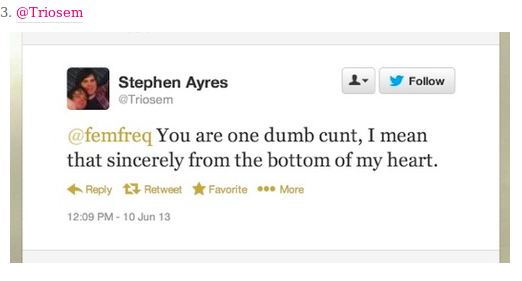
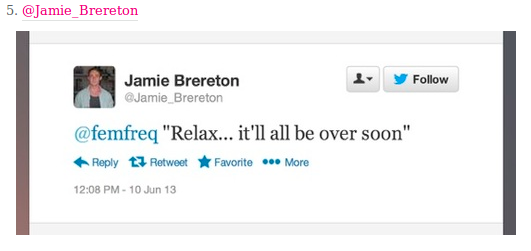

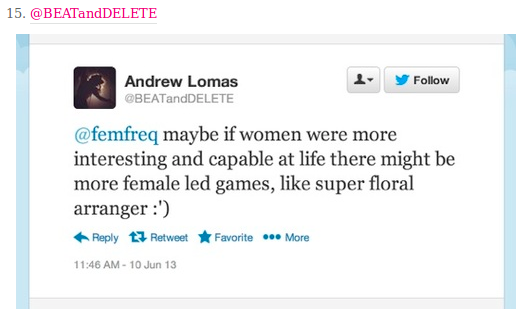
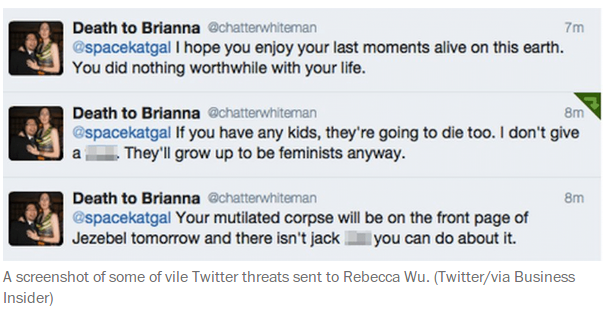
No Comments